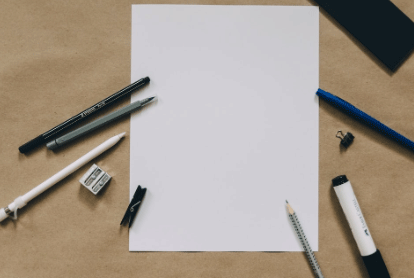| Any form of visual art can be implemented into art therapy.
Let's focus on the most popular ones:
Painting
Painting is probably the first thing that comes to mind, when we think about art therapy. It is an excellent way to express one's emotions and make a beautiful piece on canvas. Unlike drawing, the materials used for painting therapy are more fluid, which is why it is not recommended for patients who struggle with low-self esteem and perfectionism, as dwelling on minor details or lack of skill can lead to spiraling and overwhelming anxiety. Painting usually works for children and young adults and shows most improvement in these specific age categories.
Drawing
Similar to painting, drawing can increase attention to details and lower the stress level in patience, who struggle with disorders such as PTSD and EDs. Materials that are often used are pencil, charcoal, crayons and usually performs on a regular paper. It is one of the most simple, yet effective methods of art therapy, as the patient does not feel overwhelmed with the amount of fluid texture of the materials and allows to tell a story rather than focus on making an artwork.
Sculpture
Sculpture is a very valid and useful technique in art therapy, as it teaches the patient about "reframing." Reframing is a psychological term, used to explain that each problem can seem different from another point of view. Essentially, it unravels a positive view on an issue and helps in finding the solution. Aside from that, working with clay or paper mache is a great grounding exercise, as constantly touching a different texture allows for the sensors in the brain to refocus from the issue at hand. It also gives a sense of stability and control, which is crucial for those who are going through a crisis and feel a never-ending chaos in their lives, due to a mental or physical disorder.
Collage
Another fun and resourceful way to work through a trauma is collage-making. Similar to sculpting, collage helps with the sense of control that the patient may lack due to a mental illness or life circumstances. This activity literally helps a client to organize their thoughts and create a vivid picture of the problem which leads to finding a solution.
Writing
Even though some people do not view writing as a form of art, it could be a great creative outlet when it comes in the forms of journaling or story telling. When a patient is expressing their feelings through written words, it allows the thought process to be more structured when dealing with trauma or severe stress. This art therapy method commonly needs a simple pen and a piece of paper, but the client has creative freedom to use any materials or even illustrate in their journal, combining both drawing and writing techniques.
Photography
Most of the time, the photography method is used for patients who are in the process of overcoming symptoms of PTSD, as it helps restore memory for those who suffered from traumatic events that caused their brain to shut off any reminders of the unpleasant experience. Photography can be transformed into a storyboard which will be used to reframe and find an alternative, more positive perspective. Clients are encouraged to use any form of photography and can capture the desired moments on their cellphones and digital or film cameras.
Textile
This method is commonly used with children through soft fabrics or even stuffed animals. Working with textile means adding a sensory element to therapy, which helps in gaining a level of comfort and trust between the patient and themselves. Any variations from sewing to tie-dyeing a fabric is welcome in the textile art therapy and have benefitted millions of people.
Digital
Last but not least, digital art can come in handy when dealing with trauma or stress, etc. It is the newest form of art therapy and grasps its focus on the youngest generation that has been born when the Internet existed. It collaborates elements of photography, video editing, digital photo-editing, and many more. Digital mediums are well-known to integrate the idea of storytelling which is exactly the purpose of digital art therapy - sharing your story and understanding what coping mechanisms can be applied.
|

Type Of Art Therapy: Painting

Type Of Art Therapy: Drawing

Typee of Art Therapy: Writing
|
